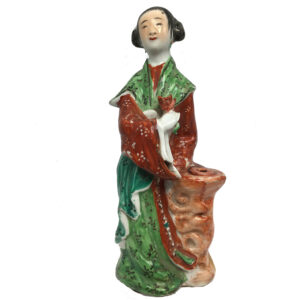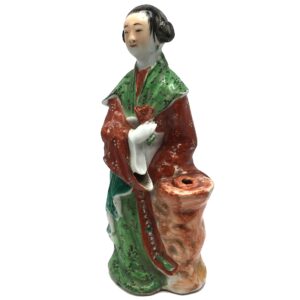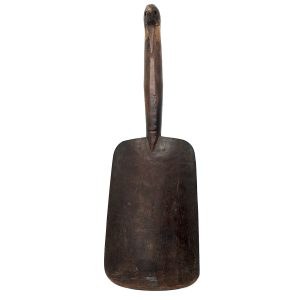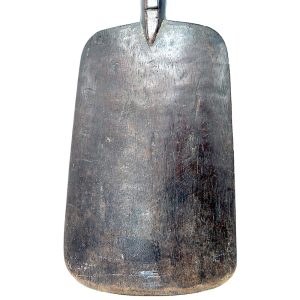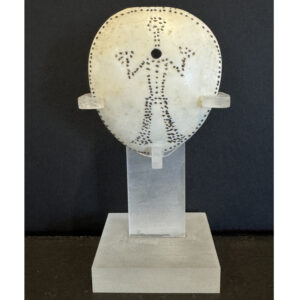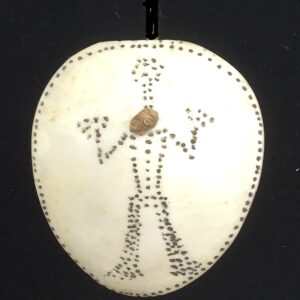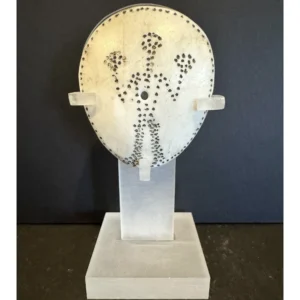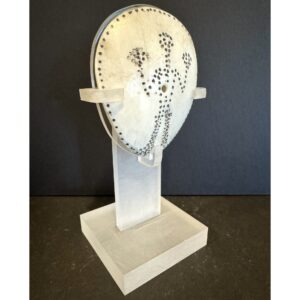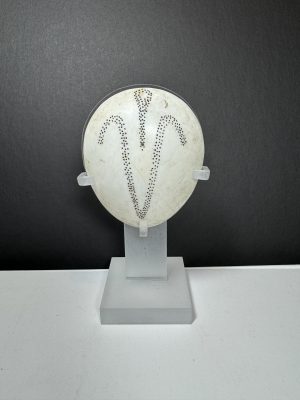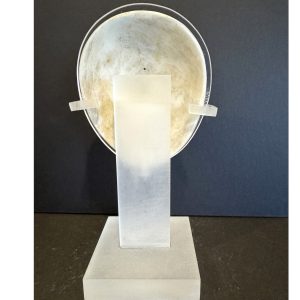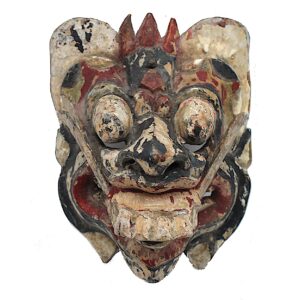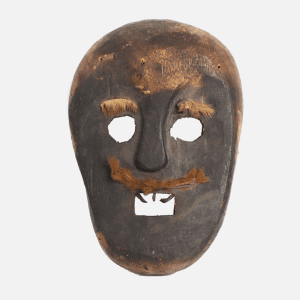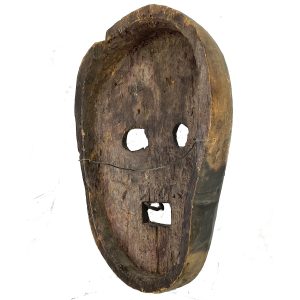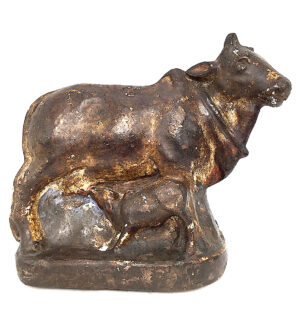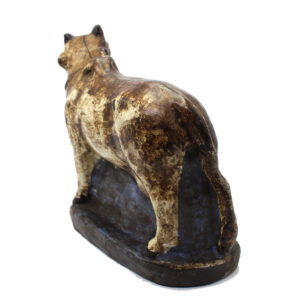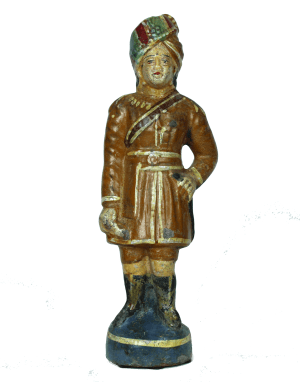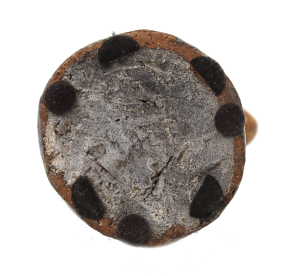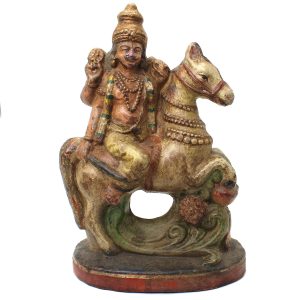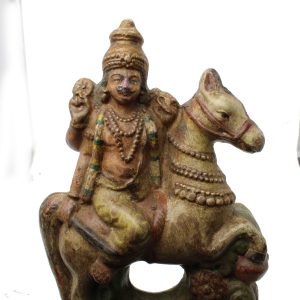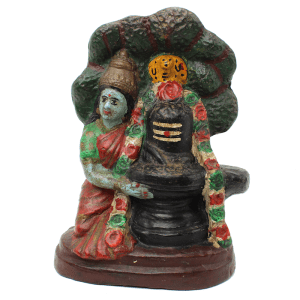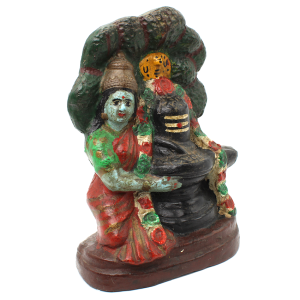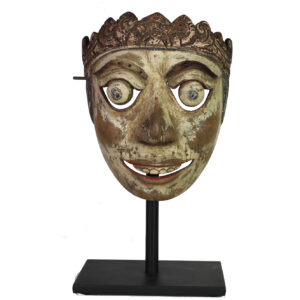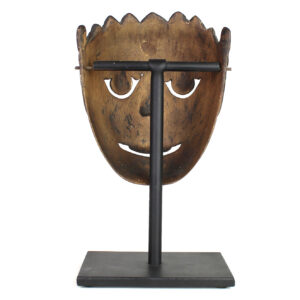Showing 301–312 of 313 results
-


$240.00
Ht: 9.75″ W: 3.5″ D: 2.5″ | FREE SHIPPING WITHIN CONTINENTAL U.S. !
This Chinese Republic Period delicate porcelain figurine holds a rose at her heart in her right snow white hand, her left arm covered by her shawl resting on a waist-high decorative vase with an opening to hold incense (joss) sticks. Her shawl drapes over her shoulders and lower garment with floral motifs extending to the beaded belt at her waist. The sweet facial expression with slightly smiling bowed lips is framed by her piled hair looped in a chignon over each ear. Given her luxurious garments and accessories, she is an aristocratic woman. The rose was often used on porcelains during this period, representing eternal spring.
-


$115.00
This vintage Indonesian rice paddle/spoon was crafted from local wood by a Lombok craftsman and is a fine example of the cultural art of the Sasak people who number three million and comprise about 80% of its population. As animism farmers for two millennia, they lived in houses surrounding religious compounds where they held religious…
-


$225.00
Nagaland conch shell ear covers are worn by men and attached to their pierced ears through a hole in the shell using thin natural fiber strings with glass, wood or bamboo bead stoppers. They are usually decorated with one of two stippled (engraved, marked with black dots) images: an abstraction of curved buffalo horns with…
-


$225.00
Nagaland conch shell ear covers are worn by men and attached to their pierced ears through a hole in the shell using thin natural fiber strings with glass, wood or bamboo bead stoppers. They are usually decorated with one of two stippled (engraved, marked with black dots) images: an abstraction of curved buffalo horns with…
-


$250.00
Nagaland conch shell ear covers are worn by men and attached to their pierced ears through a hole in the shell using thin natural fiber strings with glass, wood or bamboo bead stoppers. They are usually decorated with one of two stippled (engraved, marked with black dots) images: an abstraction of curved buffalo horns with…
-


$395.00
This rare folk art Rangda mask was made on the island of Lombok, Indonesia by ethnic Balinese Hindu craftsman. Primarily Muslim, a Balinese Hindu minority ruled the island from 1750-1895 and Hindu temples (pura) have been centers for Balinese activities since the 17th century. Balinese girls are encouraged to “dance with their hands” and formal…
-
Sale!


$495.00 Original price was: $495.00.$325.00Current price is: $325.00.
H: 12.5″ W: 8.625″ D: 2.75″ | FREE SHIPPING IN CONTINENTAL U.S.!
Timor masks like this are rare and characterized by large roughly cut eyes, the absence of some teeth and the remaining ones being menacing. They are stored in the rafters above the house hearth accounting for their smoky black color. Often decorated with animal hide with hair, the facial pieces have either not darkened fully in the rafters or, when placed on top of each other, did not darken evenly. Frequently a bit threatening due to the black color, missing teeth and their frequent lack of balance, these ancestral masks are used in offering rituals designed to drive off malevolent spirits.
-


$105.00
The cow in Hinduism represents divine goodness and generosity, is venerated, protected and sanctified in India and is associated with Hindu deities such as Shiva whose mount (vahana) is the bull Nandi and with some goddesses because of their beneficent maternal traits. Earthenware terracotta pottery has played a significant role in the cultural, religious and…
-


$105.00
Earthenware terracotta pottery has played a significant role in the cultural, religious and artistic traditions of India for centuries. Indian terracotta images are considered spiritual, mystical and auspicious as Hindus believe terracotta incorporates the five natural elements of air, fire, earth, water and metal. Made with a bivalve mould that is hand luted and hand…
-


$145.00
Earthenware terracotta pottery has played a significant role in the cultural, religious and artistic traditions of India for centuries. Indian terracotta images are considered spiritual, mystical and auspicious as Hindus believe terracotta incorporates the five natural elements of air, fire, earth, water and metal. Made with a bivalve mould that is hand luted and hand…
-


$165.00
This painted earthenware terracotta Hindu devotional image (murti ) of Shiva and Parvati was used to help devotees in daily prayers (puja) focus and visualize the deities on their home altar. This image is both aniconic (symbolic, abstract, and non- representational) and figurative. Shiva’s image is represented by a symbolic round phallus – a lingham…
-


$550.00
H: 7.25″ W: 6” D: 3.25” | CALL 213-568-3030 OR EMAIL [email protected] FOR SHIPPING COST This mask of a king (topeng dalem) was made by a carver from the Balinese community on the Island of Lombok. Most Balinese carvings and masks are a blend of Hinduism and its initial animism. Hindus on Lombok descended…
End of content
End of content

